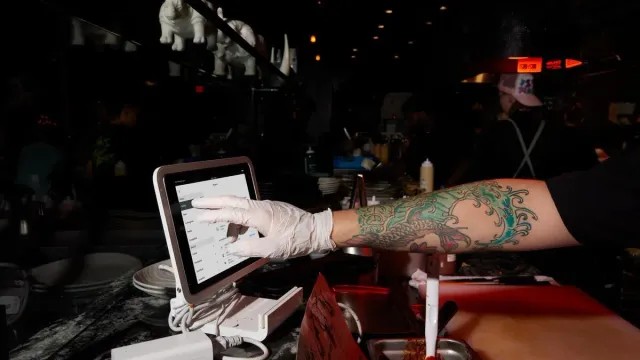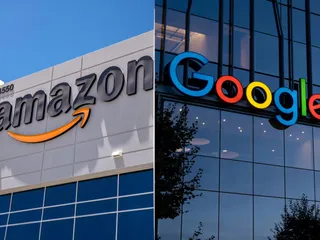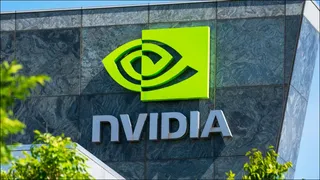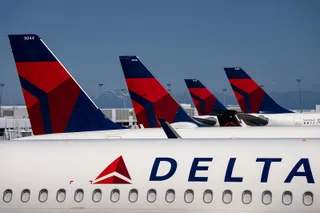AI orders, crypto payments, and merchant scepticism: Square’s bold new play for restaurants and cafés
Square just dropped a powerful new combo: AI voice ordering plus integrated Bitcoin payments/wallet.

Square just dropped a powerful new combo: AI voice ordering plus integrated Bitcoin payments/wallet.
Square just dropped a powerful new combo: AI voice ordering plus integrated Bitcoin payments/wallet. It’s the kind of move that gets people talking, raising both excitement and scepticism.
Below, I tackle four of the most common and pressing questions I’ve seen asked by restaurants, cafés, and merchant operators. If you’re planning to pitch, sell, or adopt these features, these are the ones you need to address head-on.
“Can the voice AI reliably handle complex orders and customisations?”
This is probably the #1 worry in restaurant circles. At its core: Will the AI understand our customers even when they speak in messy, natural language… and get orders right?
Your menu is rarely simple. Think modifiers, allergies, special requests: “Make it half spicy, light on the onions, no dairy, extra pickles.” If the bot flubs that, you have angry customers and wasted meals.
I’ve seen restaurant owners ask (on forums, in private message groups):
“If the AI mishears something, does it ask for clarification or just default? Can I override?”
“With accents, background noise, multiple impediments, how often will the AI fail?”
Square claims its AI handles order conversations and sends confirmed orders directly to the kitchen or POS, eliminating double entry. They also emphasise that the bot can accommodate questions about ingredients or customisation requests.
Still: There’s a huge difference between “can in theory” and “performs at scale, in real restaurants.” Edge cases, such as heavy accents, noisy dining rooms, and fast orders in busy windows, will expose the robustness (or lack thereof).
What to do
- Show real use cases/demos: Voice ordering in action at busy times, across accents, with quirky requests.
- Log & surface edge case failure rates: Transparency builds trust.
- Offer human fallback or escalation paths: “I’m not sure I understood. Can you repeat?” or route to a staffer.
- Allow merchant tuning/customisation: Your bot may need merchant-specific tweaks (menu naming, phrasing synonyms).
“How well does this voice ordering integrate with my existing POS/kitchen systems? Will it reduce double entries or errors?”
Integration is often the make-or-break factor for adoption. If voice orders become a parallel, disconnected workflow that requires manual reconciliation, manual error correction, or a separate interface, merchants won’t adopt it. Complexity kills adoption.
Square markets this as a native extension: voice orders “are sent directly to the kitchen or POS system, eliminating double entry.” That’s a strong claim.
They strengthen the positioning by pointing out that competitors like Yelp, Kea, etc. are building voice AI for restaurants, but Square’s differentiator is its tight integration within its existing ecosystem.
That said, merchants will push: “Which POS versions exactly? Which kitchen display systems? What about third-party integrations or legacy modules?”
What to do
- List supported POS/hardware versions: Make it explicit which stacks are supported out of the box.
- Show “before vs after” flows: How a call becomes an order line item in the same system.
- Provide robust API/webhook options for those using custom or hybrid setups.
- Offer failover/reconciliation tools: Audit logs, mismatch detection, or manual correction interfaces.
“Will customers even use voice ordering? Or just get frustrated if the bot fails?”
This is a behavioural and trust challenge. Even if the technology works well, customers might hang up, switch to an app or a third-party delivery service, or avoid calls entirely if they think the bot won’t understand. The last thing you want is an order channel turning into a churn channel.
Merchants ask:
“What if a customer says something the bot can’t parse? Do they give up?”
“Will customers feel they’re talking to a robot? Will that degrade brand experience?”
This hurdle is more subjective and psychological, but critical.
What to do
- Publish customer feedback/case studies: “In our pilot, 80% of callers used voice ordering, and 95% of those said the experiment felt smooth.”
- Build fallback prompts / graceful failure modes: Default to “Sorry, can I redirect you to a staff member?”
- Offer training/user guidance: Prompts like “You can say ‘add extra cheese’ or ‘no onions’”
- Run A/B tests: Compare caller abandonment rates, order completion, and comparison with human answering.
“What’s the real value in accepting Bitcoin? How many customers will use it, and how do I manage volatility and fees?”
Bitcoin integration is the exciting headline, but it raises a ton of scepticism. Bitcoin is volatile. Many merchants don’t see it as a “currency” but as a speculative asset. Accepting it may bring complexity, tax burdens, customer friction, or risk of holding a falling asset.
Square is positioning itself aggressively:
- For a limited time, zero processing fees for Bitcoin payments.
- After January 1, 2027, they plan to charge a 1% fee on Bitcoin transactions.
- They allow sellers to automatically convert a share or percentage of card sales into Bitcoin (“Bitcoin Conversions”) up to 50% of daily revenue.
- The system includes a native wallet in the Square dashboard for holding, buying, selling, or withdrawing BTC.
Still, the common merchant hesitations surface everywhere (LinkedIn threads, forums):
“Do U.S. consumers actually want to pay with crypto?”
“Bitcoin conversion rates kill the upside.”
Beyond scepticism, real risks include:
- Volatility: Your BTC receipts may drop in value before you convert
- Regulatory / tax: Reporting, capital gains, reconciliation
- Customer adoption: Few patrons may actually choose BTC
- Liquidity & conversion friction
- Security: Wallet, custody, reversibility (BTC payments are irreversible)
What to do
- Provide adoption data and forecasts: “We expect U.S. crypto payment users to grow 82% from 2024 to 2026.”
- Show impact models: “If 2% of revenue is BTC, here’s profit impact under volatility scenarios.”
- Offer auto-conversion / default to USD: Merchants need a safety net
- Clarify tax & compliance: Partner with accounting tools, include guidance
- Educate customers: Signage, receipts, incentives for paying with Bitcoin
My take: Attack the objections upfront, and merchants will shift from curiosity to commitment
If you’re a product, marketing, or sales leader at Square (or a payments/restaurant tech firm), here’s how to internalise this:
- Use these four questions as scaffolding for your pitch, onboarding, demos, and documentation.
- Don’t bury the risks: Address edge cases, failure modes, fallback plans, security, and compliance.
- Be empirical: Run pilots, collect metrics, show before/after outcomes.
- Tailor messaging depending on merchant profile (small café vs multi¬location chain). The objections differ in nuance and scale.
- Iterate rapidly: Gather merchant feedback early, adjust the voice model, conversion defaults, UI, and failover strategies.



